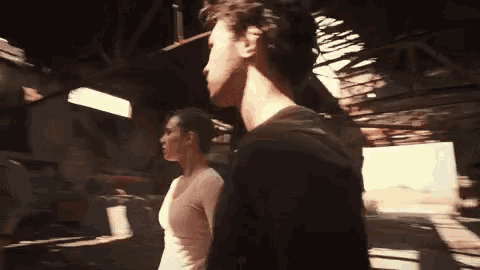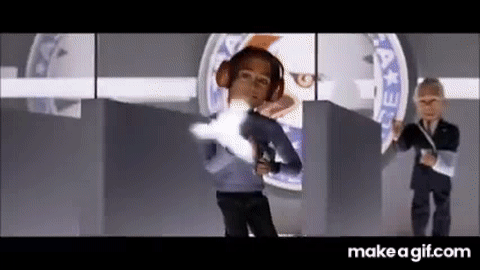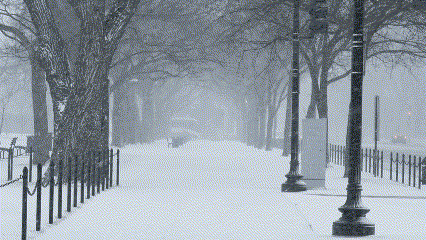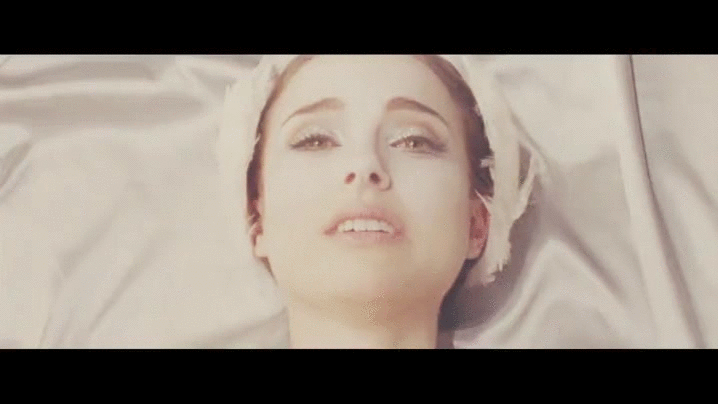
film editing
shots
sequence

A shot is a piece of footage with no interruption
a sequence is series of shot shown one after the other to create a connection
editing
Editing is the process of manipulating a piece of text used to convey information often to sell or broadcast
the role of an editor is to manipulate media text to improved it in exchange for pay
montage

A montage is a series of shots that compresses events into a short amount of time within a film. It tells us a lot about characters and the things they have experienced in a short amount of time, often to music, so we feel more emotionally attached to the characters.

continuity editing
non-continuity editing
continuity editing is a technique where you combine similar shots to continue the narrative while keeping consistency
non-continuity editing is disrupting shots to break the sequence or break consistency
history
1888
Louis Le Prince can be considered the father of film because of his work in 1888. He created the earliest known film called Roundhay garden scene which is a short film featuring people walking around oakwood grange. It was filmed using Eastman Kodak paper base photographic film using Louis Le Prince's single-lens camera.
1890
In 1890 the Thomas Edison and William Dickson unveiled the kinetoscope. This was the first motion picture camera. After making this Edison did event anything new film

1895
In 1895 the Lumière brothers invented the Cinématographe. It was smaller and quitter the Edison's kinescope but was also slower. what made the Cinématographe so revolutionary was the fact you can record, develop and project with it. The used it to record workers leaving their factory, making a film called "La Sortie des ouvriers de l’usine Lumière"

1894
Antoine Lumière went to see the kinetoscope premier in paris. When he got back home he convinced his sons to make they're own version of the kinetoscope but better. he wanted them to give it a projector.
1896
In 1896 the Lumière brothers opened the first Cinématographe theaters. these theaters were opened in London, Brussels, Belgium and New York.
They made 40 film most of which focus on french life but they also made the first newsreel and documentary.
1896
george melies accidentally created the jump cut when he took his homemade film camera to paris. he filmed a bus going through a tunnel his camera jammed by the time it was writing again a car was driving through

1895
in 1895 George Méliès created explored some basic camera tricks (stop motion, slow motion, dissolve, fade out, superimposition, and double exposure.)

1903
the first edited film was made in 1903 by edwin s porter which was edited by cutting the physical film and connecting it to a new film. This film has 12 shots and 10 location

early 20th century
slow motion was invented by the Austrian priest August Musger in the early 20th century.
1915
D.W.Griffith is known for his contrabutions to motion picture by introducing/refining techniques such as cross cutting, rhythmic editing and ome camera angle/frame


1910S and 20S
Lev Kuleshov was the first film theorist his theorised about montage editing and it's affect on the viewer. Created a theory that is now known as the Kuleshov Effect.
In which the viewer is shown a montage of a close up of a man then cuts different shots that would draw out different emotions. After each shot the audience describes the man to look like he feeling a different emotion even though the man face hasn't changed
1924
in 1924 the first editing software was created by Iwan serrurier. the original concept was suppose to be a home video projector


1930ish
Rouben Mamoulian noticed that the closer the mic is to characters the the closer the person will sound to the audience. he used this technique in Dr.Jekyll and Mr.Hyde by having the sound change based on how close the camera is to the subject talking to make the person sound and look closer
1920-80
alfred hitchcook revolutionised editing through the way he used techniques in his films showing the film industry the potention editing had to change a film and affect the audience


1970-
Steven Spielberg is known for having extremely successful care through his many horror, action and sci-fi movies. this lead to him getting 3 academy awards, the Order of Merit of the Federal Republic of Germany, the Medal for Distinguished Public Service, the Lifetime Achievement Award, the Gold Hugo Lifetime Achievement Award, etc
narrative
enigma code
linear


an enigma code reels the audience in while giving them more questions
linear narratives refer to narratives that happen in a certain order with all the events happening one after the other
multi strand narrative
non-linear


a narrative that doesn't go in chronological order e.g. story told from end to start
this means a story with have multiple characters that have their own plot point instead of just one character and a supporting cast
serial narrative
series narrative


a serial has a set amount of episodes. It is made up of one narrative split into episodes, with one episode following directly on from another. An audience would have difficulty understanding the middle episode of a serial if they had not watched the previous ones.
this is a long-running television programme like a crime drama. Each episode of a series has a self contained storyline and the audience can watch a random episode audience. However, it also contains storylines that link one episode to another.
flexi-narrative
episodic drama
this is the most complicated narrative type with the characters being complex and the narrative having twist and cliff-hangers
this is a show where each episode is it's own story
unrestricted narrative
restricted narrative


this is when the view knows more then the characters
when the audience knows as much as the characters
editing techniques
straight cuts
a straight cut is a simple cut from one shot to another with no affects. this is the simplest and most common cut which is often used when you want to change shot in a way people aren't likely to notice
in this clip a straight cut is used while batman is changing into his suit. This use of the techniques make the editing go unnoticed.
This technique is also used when the editors only goal is to change shots without thinking of any style or effect
transitions
transition are stylistic editing techniques
fade
a fade refers to an editing technique where the screen slowly changes to black
this is often used when a character dies
wash
wash is when a shot fades to white which means it's the opposite of a fade
It's often used to set up a when characters are blacking out, having a flashback or dreaming


wipe
wipe is when the next shot covers the current one slowly taking up more of the screen till you can't see the previous one anymore
dissolve
dissolve is when one shot become more transparent to reveal thee next shot behind it
this is often used in montages


cross-cutting/parallel editing
this is when multiple shots of a similar nature are put next to each other to establish a connection
this is commonly used in action films

Quick cut
a quick cut is a series of straight cut made put in with little time inbetween to make the scene look fast pace and overwelm the audience
this a commonly used in action films
In this clip from 'shaun of the dead' quick cuts are used during shaun's morning routine since the scene was simple and didn't add to the narrative showing it with quick cuts make it less boring without making it hard to follow
Long takes
a long take is a shot that last longer then is normal
elliptical editing
this is a technique when you compress something that take a long time in the narrative in a shorter time in the film
commonly used during training montages
cutaway
This is done during a long scene by interrupting it with an unrelated
This is done used to stop the audience feeling bored of the same shot.
cut ins
L-cut
An L-cut is when the audio from the preceding scene continues to play over the footage from the following scene.

J-cut
A J-cut is just the reverse of an L-cut. The audio from the following scene plays over video from the preceding footage.

eyeline match
this is when the character is looking at something then the next shot is the thing they're looking at.
often used in action or when a character is looking around for something then see it
match on action
Matching on action refers to an editing techniques where the editor cuts from one shot to another view that matches the first shot's action. An example of this is if a character's walking up to a door and reaching for the knob then it cuts to a shot of a door opening
shot/reverse shot
this technique is when one character is shown on screen talking to someone behind the camera then the shot changes to a shot of another talk to someone behind the camera in the same room
The audience is led to believe the characters are talking to each other
In this example the character is talking to someone but it's unclear who. The shot change to different objects while the character asks who's speaking.
The audience assume that the object in the shot are who's talking but get their expectations subverted.
reaction shot
a reaction shot is when the current shot is of the action then the next shot is a cut to a characters reaction to the previous shot
this is commonly used to covey emotion
Establishing shot
Establishing shot is a shot at the start of a scene used to set the scene with an extreme long shot of a location sometimes featuring characters
This is commonly used to show off a location, to hit to the audience what's about to happen or to give the viewer info on the kind of building the characters are.
30-degrees rule
this is a rule that says if you are filming people in conversation you should over 30degrees between the angle of the current shot and the one after

180 degrees rule
this is a rule that when filming a conversation you shouldn't no shots should be more the 180 degrees from each other. this is because is they do the scene will look like it flipped which is bad for continuity and may confuse the audience

jump cut
This is a technique where you do a sequence of cuts throgh scenes that look similar or the same.
This is commonly used to show the pass of time.
graphic match
this is when the previous shot and the one after have a matching shapes, colours or composition. this can be one element or the whole shot

freeze frame
this is when the video stop the audio can still play. it's commonly used to set the scene for narration or to end a scene
slow motion
this is when the shot is slowed down. it's often used during action scene to make fast motion easy to see
split screen
this is when the shot is separated into using a visual barrier between shot like a black like

flashback
this is when the story is interupted by a scene taking place in the past.
flash foward
this is when the story is interupted by a scene taking place in the future.

purpose
manipulating the sense of time
-I'd use elliptical editing since it's purpose is to manipulate the sense of time with the aim of compressing it
-Alternatively, i could slow motion to make time look slower to the audience
Controlling the perspective of space to create a logical believable space between characters:
-shot/reverse shot can be used since its meant to be used for conversation and doesn't require both characters to be in the shot at once
-cross cutting can also be used since it create a connection between places to the audiences
controlling the pace and rhythm to control the flow of production:
-jump cut can be used to speed up the pace of a scene since it often implies to the audience that alot of time is going past
creating a narrative through motivation(motivated editing)
-straight cuts can be used to make the change less noticeable
-you could also use dissolve to make the scenes look more connected
creating a sense of drama through the withholding of infomation:
-fade can be dramatic way to end a scene but it doesn't directly tell the audience anything, it only hints what happened but it can still be unclear
embracing continuity between shots:
-graphic match can be used to establish continuity between the shots
engaging the audience through suspense and causing audience reaction:
-eyeline match can cause suspense by showing the characters reaction the audience will wondering what they are looking at
-fade can leave the audience worried since black connotes death, pain and danger
forming meaning by juxtaposing elements within editing and creating a sense of personal connection and empathy with a character:
-graphic match can draw connection between shots
-L cut can present similarly to narration telling the audience the scene are connected
-reaction shots can tell the audience the characters feeling if the character is feeling a negative emotion the audience may feel sorry for the character
LEARNING AIM B
continuity
practice
panning
story board
script
video
evaluation
I aimed to make a simple everyday task look interesting when filmed by using various continuity editing techniques. The sequence involved a lot of movement so i used cut aways to break up long take also a lot of movement means i need to be careful with continuity to make sure posture, gesture and positioning stay constant throughout. To make the sequence more interesting i used match on action. I also used cutaways to break up long shots of the character walking somewhere
non-continuity
practice
planning
dream sequence
evaluation
my aim was to create a non-continuity sequence about a girl having a dream. When planning this i wanted to make interesting and somewhat following narrative but also clearly unrealistic. I did this by using wash to signify that the next shots is part of the dream. I used in similar thing when transitioning from the dream to the real world. I made the POV shots black & white to differentiate between a normal shot and a POV it also tells the audience this is how the characters see the world. I also wanted the shot where she falls to look disorientating. I achieved this by using 2 different takes of the same shot and overlapping them together with a cross dissolve. this gives the effect of seeing double which give the audience a view of how dizzy the character is meant to be
learning aim C
storyboard

Describe your image

Describe your image

Describe your image

Describe your image